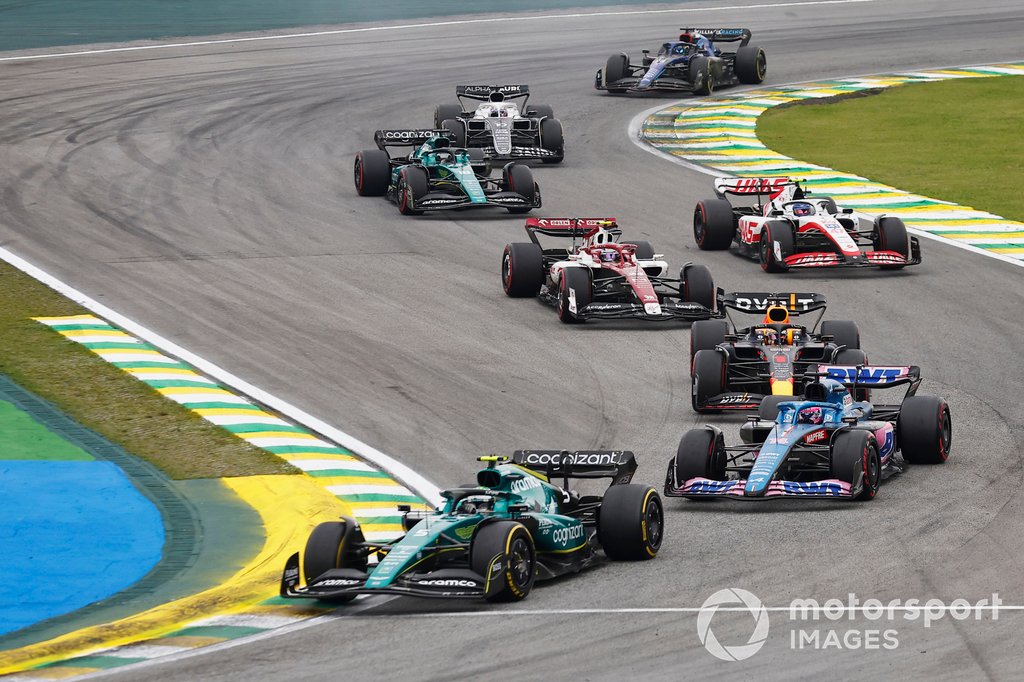F1 overhauled the design of the cars for 2022 in a bid to create closer wheel-to-wheel racing and reduce the impact of dirty air reducing downforce when following, allowing for more overtaking action.
This was achieved by redesigning the shape of the front and rear wings, removing bargeboards and bringing back ground effect-style aerodynamics.
Drivers were largely positive about the impact of the new regulations this year, believing it had allowed for better on-track battles.
But this has now been backed up by the numbers as Pirelli revealed on Tuesday in Abu Dhabi at the end-of-season test that overtaking had increased by more than 30%.
Over the 2021 season, Pirelli said there were 599 recorded overtakes, but in 2022, this figure increased to 785 overtakes over the same 22-race span.
Pirelli F1 chief Mario Isola explained that only “proper overtakes” were counted in the analysis, meaning the numbers were not skewed by cars pitting or dropping down the order.
“Unfortunately it is difficult to have a statistic where if they overtake each other two or three times in a lap, like I don’t know Jeddah or some other races,” said Isola.
“But then on the main straight, they are in the same position, you don’t get this because it’s too difficult. It’s just real overtaking.
“I believe it’s a very good number, 30% more, considering that is informed by the facts, so it’s not exaggerated. It’s quite a good point.”
Sebastian Vettel, Aston Martin AMR22, Fernando Alonso, Alpine A522, Max Verstappen, Red Bull Racing RB18, Zhou Guanyu, Alfa Romeo C42, Mick Schumacher, Haas VF-22
Photo by: Sam Bloxham / Motorsport Images
Isola explained how the ability for cars to follow each other more closely meant there was less sliding impacting the tyres, as well as the fact drivers could push more consistently over a stint.
“It’s not just the tyre, it’s the package that is working well, that was part of the design of the new package,” said Isola.
“The fact that when they follow each other, they lose less downforce is obviously helping the tyre, because they don’t slide more, they slide less and they don’t overheat.
“We decided to introduce this new family of compounds [with] much less overheating, some degradation.
“But the drivers with thermal degradation can push, because they were complaining in the past that when they were following another car and pushing, they were starting to lose grip and slide, and obviously there is no possibility to attack…
Click Here to Read the Full Original Article at Motorsport.com – Formula 1 – Stories…

